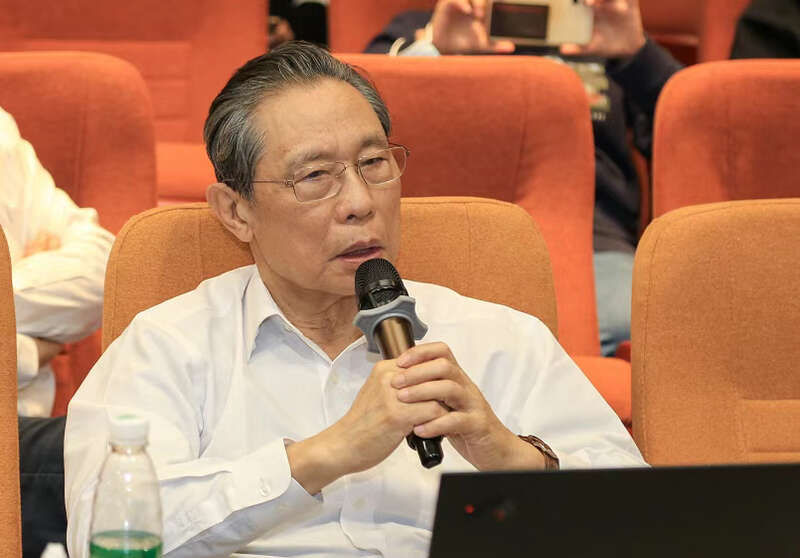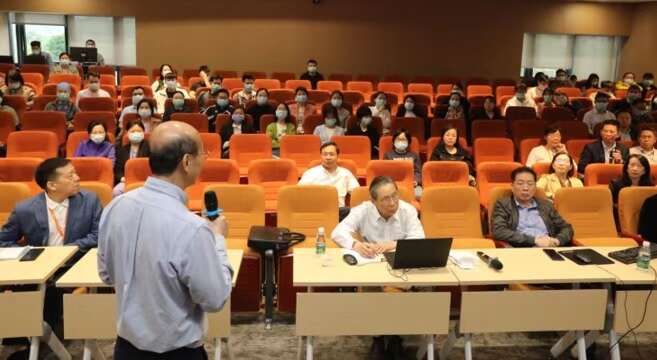China Youth Daily client, Guangzhou, March 23 (China Youth Daily, China Youth Daily reporter Lin Jie) How to formulate the next treatment strategy for two difficult breathing cases whose etiological diagnosis is not yet very clear? Today, Academician Zhong Nanshan led a team to the Department of Respiratory and Critical Care Medicine, Dataansha, the First Affiliated Hospital of Guangzhou Medical University, and came to the bedside of two difficult cases to conduct consultations and examinations one by one.
A few days ago, the Department of Respiratory Medicine of the First Affiliated Hospital of Guangzhou Medical University admitted two difficult cases. Mr. Lin, a 54-year-old male patient, has developed symptoms of cough, dizziness, and vomiting without obvious incentives since mid-February 2021, especially after opening his eyes. genus. A 23-year-old female patient, Xiao Zhan, suffered from cough and dyspnea for more than two months. She was repeatedly intubated and extubated in another hospital. Later, she was transferred to the Department of Respiratory Medicine of the First Affiliated Hospital of Guangzhou Medical University due to difficulty in extubation.

Previously, Zhong Nanshan had done his “homework” and read the medical records of the two in detail. In order to shorten the distance with the patient, Zhong Nanshan sat down beside Mr. Lin, and began to inquire about his condition as if he was doing a “homework”. During the physical examination and auscultation, from the eyes, throat to the old scars on the fingers, legs and feet, He did not miss every detail, and analyzed the correlation with the disease.
Afterwards, Zhong Nanshan came to Xiao Zhan’s bedside again. Due to prolonged malnutrition, she lost weight to less than 35 kilograms. In addition to prolonged tracheal intubation and fatigue, her voice was hoarse and extremely weak. Zhong Nanshan tried to get as close to her as possible, and patiently listened to Xiao Zhan’s description of his illness and feelings. During the auscultation examination for her, Zhong Nanshan leaned down and gently supported her back with his hands, helped her to sit up, warmed the stethoscope with his hands and placed it on the patient’s body. “Habit”.

During the half-hour rounds at the bedside, Zhong Nanshan patiently communicated with the patients and their families about the condition, performed a series of auscultation examinations for the patients in a meticulous manner, and reminded the students and young doctors around them of the issues that need attention.
The reporter learned that although the doctor in charge had given Zhong Nanshan all the detailed examination materials before the ward round, he still insisted on going to the bedside first and could not “talk on paper”. Zhong Nanshan believes that it is necessary to go to the front line of the clinic and to the patient’s bedside in order to obtain first-hand information. This is the soul of the “Academician’s ward rounds”, and it is also a “must-choose action” before each multidisciplinary diagnosis and treatment (MDT) discussion of difficult breathing cases.

After the bedside rounds, Zhong Nanshan immediately participated in the case discussion. Focusing on the difficulties and doubts raised in the case report, multidisciplinary experts conducted multi-dimensional in-depth discussions and layer-by-layer analyses, and put forward relevant diagnostic opinions.
At this time, well-known domestic experts in respiratory medicine, including Professor Li Shiyue, Professor Zhang Nuofu, Professor Li Jing, and Professor Luo Yuanming of the First Affiliated Hospital of Guangzhou Medical University, as well as the Department of Critical Care Medicine, Department of Laboratory Medicine, Department of Pathology, and Department of Imaging Experts from multiple disciplines such as medicine, nuclear medicine, rheumatology and immunity, hematology, and otolaryngology have already watched the whole process of Zhong Nanshan’s bedside rounds through the broadcast system on the big screen at the venue.
“These two cases involve multiple disciplines and are worth discussing together.” Zhong Nanshan said that the National Center for Respiratory Medicine must have the ability to solve the diagnosis and treatment of difficult and difficult diseases, which requires multi-disciplinary participation, mutual support and mutual support. Learn. Through detailed discussions between Zhong Nanshan and the experts, the train of thought was clarified, the diagnosis was clarified, and the next treatment plan was formulated for these two complex and difficult cases.

It is reported that the “Academician Rounds” project is a series of activities sponsored by the Guangzhou Institute of Respiratory Health, the First Affiliated Hospital of Guangzhou Medical University. Clinical case discussion, teaching mode, and jointly discuss and formulate diagnosis and treatment plans for difficult cases.
(Photo courtesy of the First Affiliated Hospital of Guangzhou Medical University)